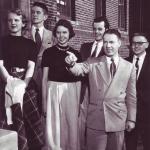I’m pleased to invite David King to the Anxious Bench. David is the Karen Lake Buttrey Director of the Lake Institute on Faith and Giving as well as Assistant Professor of Philanthropic Studies within the Indiana University Lilly Family School of Philanthropy. Trained as an American religious historian, his research interests broadly include exploring the practices of twentieth-century American and global faith communities as well as more specifically investigating how the religious identity of faith-based nonprofits shapes their motivations, rhetoric, and practice. He is the author of the recent book from University of Pennsylvania Press, God’s Internationalists: World Vision and the Age of Evangelical Humanitarianism, tracing the almost seventy year history of World Vision, the world’s largest Christian humanitarian organization. This book is the focus of our conversation today. –David
***
David Swartz: What is the thesis of your book?
David King: In chronicling the organizational transformation of World Vision from 1950 to the present, God’s Internationalists tells the story of how a small missionary agency grew to become the world’s largest Christian humanitarian organization. In the process, I am making the case that American evangelicals changed in the ways they saw themselves and their world in the period following World War II. To make this point, I am seeking to place the recent history of American evangelicalism in transnational perspective—exploring evangelicalism not only as a force in politics and popular culture but also the field of international relief and development. Chronicling the evolution of World Vision’s practices, theology, rhetoric, and organizational structure, I hope to demonstrate how the organization rearticulated and retained its Christian identity even as it expanded beyond a narrow American evangelical subculture. In so doing, I seek to offer a distinctive angle on the history of religious humanitarianism that makes sense of the dramatic growth in evangelical global social engagement over the past few decades.
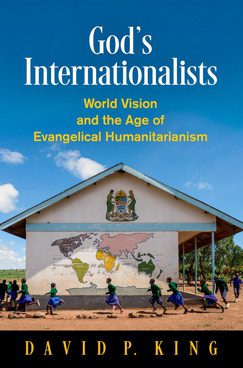 Chapter Two is intriguingly entitled “Opening Americans’ Eyes to a New World.” What “new world” did American evangelicals start to see?
Chapter Two is intriguingly entitled “Opening Americans’ Eyes to a New World.” What “new world” did American evangelicals start to see?
Chapter two chronicles World Vision’s development in the 1950s. After the end of World War II, Cold War politics fanned the initial flames of the burgeoning international engagement of post–World War II evangelicals. Even as the United States was becoming a global superpower, so was American evangelicalism. World Vision emerged to respond to the Korean War and an abundance of war orphans that founder Bob Pierce soon supported through popularizing child sponsorship. Of course, American evangelicals were not unaware of the larger world, having strongly supported global missions for over a century, and so this was not entirely new to be clear. At the same time, this was a new focus – seeking to reclaim their role as the mainstream American faith, winning the world for Christ and America, and spreading the gospel alongside democracy and capitalism.
In the wake of World War II, America’s leading evangelist Billy Graham served as adviser to U.S. presidents, and many new evangelicals like Bob Pierce followed in his footsteps, reemerging from a self-imposed separatism with a renewed interest in influencing popular culture and the political mainstream. But even as evangelicals began to seek out such influence, they were routinely discouraged. Few wielded equal political influence behind closed doors at policy gatherings in places such as Washington, D.C. or Geneva, Switzerland. American evangelicals themselves did not always agree on the proper role for humanitarianism or political action in their work. Nor did they all agree how best to engage the government in shaping policy, receiving federal funding, and working across faith lines. Many of the established aid agencies (religious and secular) denied evangelicals a seat at the table, questioning their methods, motives, and expertise as naive and underdeveloped.
At the same time, evangelicals’ reengagement at home and abroad gave many the opportunity to see the world and their role in it differently as they redefined their approaches to missions and faith-based humanitarianism by establishing new nongovernmental organizations, receiving broad-based funding, and adopting professional relief and development principles. This same global engagement forced them to reframe their own identities at home as they reflected upon what it meant to be American and evangelical in an increasingly global world. The result would be not only debates over evangelism and social action but also full-fledged support for religious, democratic, and economic freedom fighting against atheistic communism on the global stage. A few decades later, by the late 1970s, evangelical agencies would grow in influence as the broader field of global development came to appreciate their size, experience, and expertise. Their relationship with the state and the global church, however, were still up for debate.
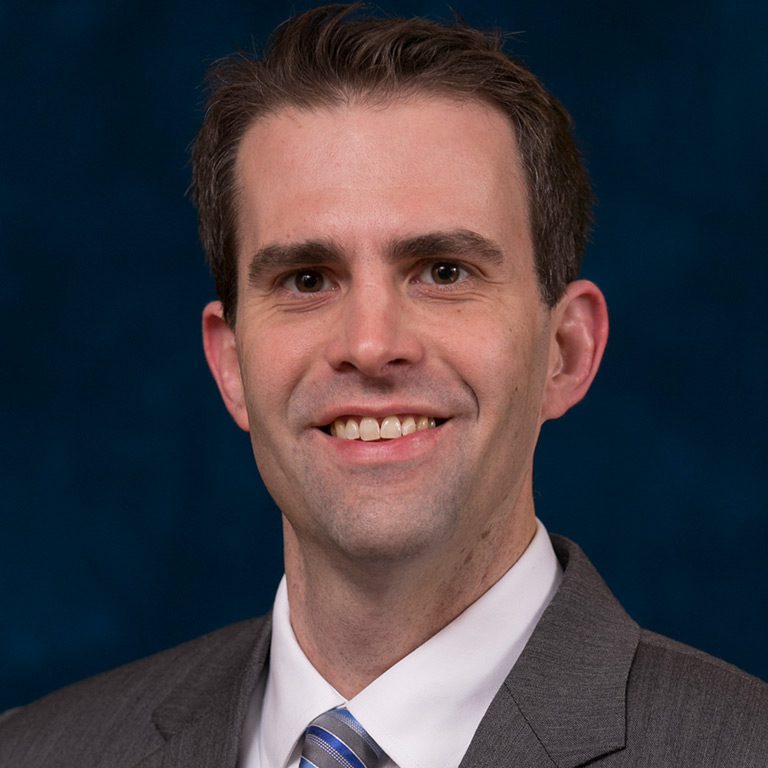
Does World Vision currently fit better in the religious right or the evangelical left? What about in the 1970s or the 1950s? Or is this just a bad question?
Like other faith-based humanitarian agencies, World Vision had to make sense of its religious identity as it grew, shifted operations, and adopted new funding streams. So, officially, World Vision defines itself as a Christian organization, but in the U.S., I still label it as evangelical. Its history and current context as well its vernacular and organizational networks demonstrate that its operates out of an evangelical ethos. To be clear, World Vision International is a federated organization that operates in almost 100 countries. Representatives from the various countries and regions come together to govern the larger World Vision International (WVI), but funding, program initiatives, and governance of each office is distinct, and World Vision offices can look very different depending on the political and cultural context of each country. WVUS is by far the largest, and still remains extremely influential within WVI, but it represents no more than half of WVI’s annual revenue and does not nor cannot dictate policy for WVI. World Vision’s religious makeup is quite different in different countries. In some Latin American countries or the Philippines, that might mean a predominantly Catholic staff. In Eastern Europe, a majority may be Orthodox. In some African country offices, the staff is overwhelmingly Pentecostal. In some more secularized western countries such as Australia or the U.K., the faith component may be less explicit. This diversity and global context has an impact on World Vision U.S. too. WVUS is not only responding to its context in America, but it is in touch with the broader diversity of World Vision internationally as it works among other humanitarian organizations and among local communities.
So to try to answer your question (it’s not a bad one, just complicated), I want to argue that while evangelicals rarely agreed upon a single vision for their movement, they invested the term “evangelicalism” with various meanings through defining, maintaining, and transgressing a number of definitional boundaries. The power of the term for me is exactly in how individuals and organizations have continued to debate what it means and how it effects organizations’ beliefs and practices. Boundary disputes often led to internal squabbles as to who counted as an evangelical, but they also led evangelicals to define themselves in contrast to others across the theological spectrum, from fundamentalists and the Protestant mainline to Catholics and secularists.
In the 1950s, under their founder Bob Pierce, they would have clearly fit as a conservative evangelical agency. Pierce would use both evangelical and fundamentalist labels to describe himself. At the same time, however, he was chastised by the NAE for “cooperative evangelism” – working with those outside the firm boundaries of American evangelicalism in his ministry abroad.
 By the 1970s, if politics and theology further divided evangelicals at home, World Vision attempted to position itself above the fray. Its second president, Stan Mooneyham grew to deplore his fellow evangelicals’ penchant for rigid categories. He argued that the world was gray: “one man’s evangelical may be another man’s liberal.” After spending most of his year in war-torn Southeast Asia, Mooneyham found typical American evangelical disputes petty. While American evangelicals remained World Vision’s base (their donors, staff, and networks were firmly rooted in the movement), the more time they spent outside the West, the more they recognized that the global outlook of American evangelicalism was not adequate to make sense of what they were experiencing. Evangelicals’ debates over God and country said more about domestic debates at home than they did the role of faith in action abroad.
By the 1970s, if politics and theology further divided evangelicals at home, World Vision attempted to position itself above the fray. Its second president, Stan Mooneyham grew to deplore his fellow evangelicals’ penchant for rigid categories. He argued that the world was gray: “one man’s evangelical may be another man’s liberal.” After spending most of his year in war-torn Southeast Asia, Mooneyham found typical American evangelical disputes petty. While American evangelicals remained World Vision’s base (their donors, staff, and networks were firmly rooted in the movement), the more time they spent outside the West, the more they recognized that the global outlook of American evangelicalism was not adequate to make sense of what they were experiencing. Evangelicals’ debates over God and country said more about domestic debates at home than they did the role of faith in action abroad.
Among the movement’s leaders, World Vision sought to position itself as the mainstream within a new global evangelicalism. After the 1974 Lausanne Congress, it believed it found relative support across the theological spectrum, avoiding the developing “culture wars” by resisting labels as a part of the evangelical left (Ron Sider, Jim Wallis) as well from the developing Christian Right (Jerry Falwell, Pat Robertson). They felt they could achieve consensus around evangelicals’ willingness to support individual children in need.
Yet, World Vision’s success is even more evident at the popular level beyond labels. I think WVUS would like to think that a question of religious right or left – even in the age of Trump – is one that they can sidestep. They would clearly not follow the same outright political tactics that Franklin Graham of Samaritan’s Purse has used in recent years (interesting point: World Vision and Samaritan’s Purse were both founded by the same man, Bob Pierce, which I develop in the book). At the same time, I believe World Vision for instance would not hesitate to advocate for the marginalized against political viewpoints that seek to shut down borders to refugees and immigrants. World Vision’s donor constituency still overwhelming identifies as broadly evangelical, but the popular reception of the organization’s message continues to offer many American Christians a way to participate in a trusted brand of religious humanitarianism.
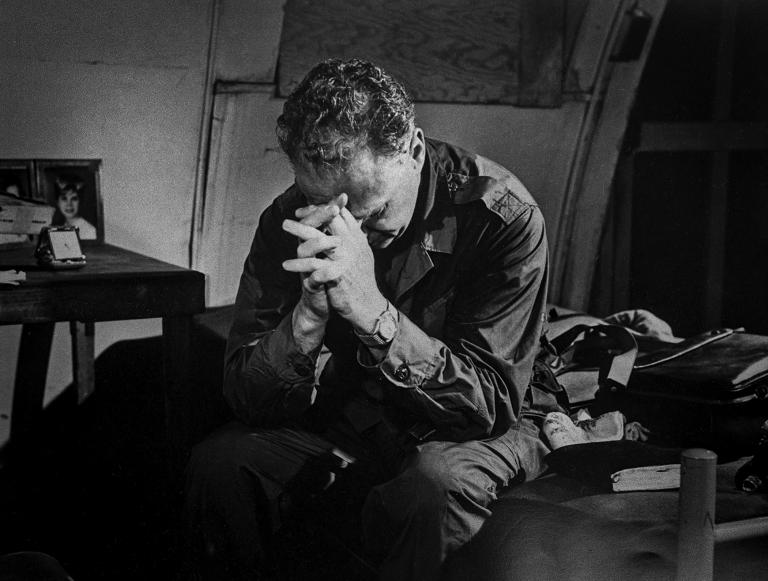
Would you have liked to work for Bob Pierce?
No doubt Pierce was persuasive and passionate. Few could refuse his compelling story from the frontlines of heartache around the world whether in war torn Korea, Vietnam, or the Soviet Union. Key for Pierce was his own commitment and sacrifice. It may have cost him his health and his family, but it would be hard to say no to Pierce’s compelling ask because he practiced what he preached. Yet, he also asked for absolute loyalty from those he trusted. Like many entrepreneurs with a singular focus, he would not settle for anything less than complete control and lots of sacrifice. It would be easy to say yes; it would be difficult to sustain long-term. I believe that is what many in World Vision experienced.
What would Pierce think about how World Vision has evolved in the forty years after his death?
Even by the late 1960s as World Vision grew, it could not be managed in the same way Pierce had started – encountering need all over the world, committing whatever resources he had in his pocket, and often giving his word he would return with more as soon as he could. World Vision was no longer a start-up; it was a large-scale NGO with bureaucracies, budgets, and regulations. That wasn’t Pierce’s forte. Perhaps Pierce would be glad that World Vision has still maintained its commitment to children at the heart of its mission. Overall, however, I believe he would be worried that World Vision had professionalized too much – taking government funding, working in large-scale development, and straying from strict evangelism. World Vision will now talk about its work much more holistically – including forms of witness when appropriate but abiding by humanitarian codes of conduct in other contexts forbidding proselytization. Generally, World Vision along with many other faith-based international NGOs has raised a much more complex and interesting conversation about the relationship of religion in the study and practice of relief and development.
What led you to World Vision as a research subject?
In college, I lived for several months in Gaza. As a white middle-class Protestant kid from the South, it was a life-changing experience to live in the Middle East in a Muslim majority culture. I have always been interested in working across cultures in my vocation generally and in my research specifically. And when exploring research topics, I was intrigued by World Vision. While the project started as a dissertation, it grew from there to explore how these major faith-based NGOs are in many ways taking the role once occupied by western missionaries. That transition, which I felt has been underexplored, was important to me. At the same time, I was eager to help reshape the narrative of American religious history (American evangelicalism specifically) through a transnational lens.
Finally, I was fascinated by the growth of the organization. It would be tempting to see World Vision’s transformation as another example of secularization – a small, narrow organization encountering modernity and subordinating its religious identity to secular methods in order to flourish. Yet, such a narrative would be far too simplistic. The reality is that an organization like World Vision functions within multiple fields often simultaneously. For example, World Vision has operated within an American evangelical subculture, a collection of missionary agencies, a global evangelicalism, large-scale fund-raising nonprofit organizations, and a secular development INGO network. Religious identity is rarely static. Throughout the history of World Vision, it was precisely the rearticulation of its religious identity that contributed in surprising ways to the evolving self-definition of the organization. The question then for became less whether World Vision as a development organization is Christian, but how it is Christian. The religious identity of faith-based philanthropies and the religious motivations of their various donor constituencies are only two of many forces that define these agencies. How does religion function in religiously motivated relief and development? That became a key question I grew excited to explore.
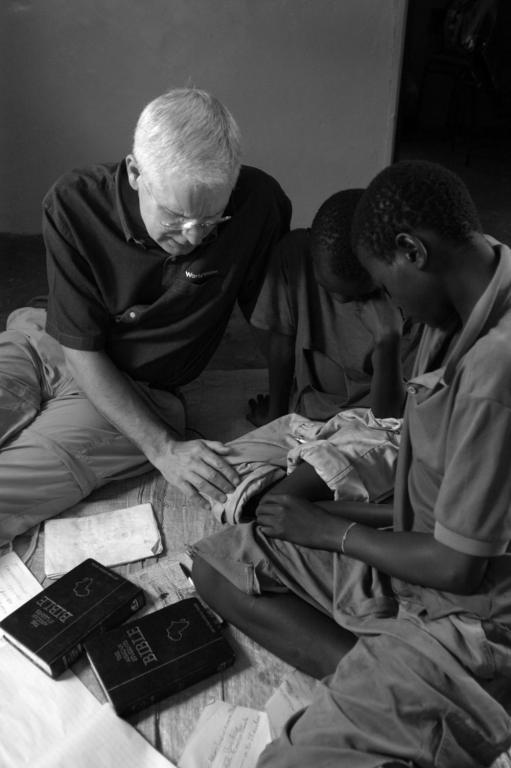
What is at stake here? If you were to write a “Concluding Unscientific Postscript” that was more normative than descriptive, what would you say?
Sprouting from a fertile evangelical subculture and expanding throughout the height of what historian Steven P. Miller has called the “age of evangelicalism,” World Vision modeled an evangelical cultural style even if it did not necessitate a singular theological or political position. I would argue along with Miller that “the recent history of American evangelicalism looks different—and, in many respects, a lot more interesting—when it is not solely about evangelicals themselves.” One issue at stake in my mind is how we continue to write the history of American evangelicalism. The first point I would want to make is that such history must be written with a global perspective (attending to the global imaginaries of Americans if not actual travel and idea exchange). Second, is to question what is the point of such research in defining a category that either seems too nebulous to define or is already too prescriptively predetermined (who is in or out) to remain flexible. For me more as a cultural style than theological category, what may be emerging is something different, broader, unpredictable, and uncertain. While not in the business or predictions, I do feel certain that whatever emerges will extend beyond what labeling voters in election exit polls or focusing on the pastors standing beside political figures on the dais can capture.
Over the past half century, evangelicals have moved into the public square, but they have occupied different corners, addressed a variety of issues, and spoken in multiple dialects. While it is impossible to understand twenty-first-century evangelicalism without politics, the political dimension is only part of the evangelical ethos. The landscape continues to evolve, but global issues remain front and center. Despite ongoing uncertainty on evangelicalism’s future and the complexities of individuals’ and institutions’ religious identities and practices, as more American Christians embrace a global vision, perhaps a new form of practical ecumenism may lead to transcending or transgressing past theological and political boundary markers. And perhaps upstart religious relief agencies and established faith-based nonprofits like World Vision may lead the way.
Finally, in an era where interreligious diversity is a refrain that both faith-based and secular organizations cannot avoid as we are seeking ways to combat rising religious hatred, rebuild civil discourse, and foster renewed trust in our democracy, I believe attuning to institutions and networks (whether congregations, faith-based NGOs, or local civic groups) is an important site for research. Often it is in the trenches of communities – local or global – where this work is being done, and both scholars and practitioners would do well to focus some of our attention here in order to apply some of what we may be learning to the difficulties of the current moment.
What is the most difficult part of writing for you? What about your favorite part?
Let’s take my favorite part first. It starts with digging into archives and doing oral interviews. But my real favorite part is putting the puzzle together. I am an outliner. I like to take what I have discovered and build an argument, thinking where the narrative is taking me, seeing how it all fits together and what we can learn as a result. Then I really enjoy the story-telling aspect of writing. That’s why at the core, I am an historian.
The hardest part these days is making time. I do not find it easy to write in short chunks of time. I need at least a few hours or ideally half a day to find momentum. In my current job, writing days like that are harder to come by and have to be scheduled and protected.
As the director of the Lake Institute on Faith & Giving at IUPUI, you don’t hold a typical academic post. What is the Lake Institute about?
Lake Institute on Faith & Giving is housed within the Indiana University Lilly Family School of Philanthropy at IUPUI. While my faculty role has me working with our masters and doctoral students – teaching classes on religion and philanthropy, ethics, and international development, the majority of my time is directing the work of Lake Institute. For over fifteen years, our work seeks to foster research, education and public conversation on the dynamic relationship between faith and giving. We undertake major research projects such as the National Study of Congregations’ Economic Practices as well as support scholars exploring this field through projects such as our dissertation fellowship or research convenings. The bulk of our time, however, is translating research into practice. Our Insights newsletter reaches over 4500 subscribers every two weeks to share the latest research and best practices on issues related to faith and giving. Our educational programming such as the Executive Certificate in Religious Fundraising works with clergy, nonprofit executive directors, and fundraisers for religious higher education in the unique challenges of leading and funding religious organizations. Finally, we foster public conversation by bringing scholars and practitioners together through lectures, seminars, and ongoing conversations to help consider what the pressing issues in this field might be now as well as into the future.
With a foot in both worlds – faculty member and administrator – its challenging to find the right balance, but for me it is a great fit. My vocation leads me to be both scholar and practitioner, and in this role I constantly get to engage both passions. Most days, we are serving to build bridges between research and practice. With both audiences in mind, I believe it makes me a better writer and communicator. I’ll confess, it is not the exact role I might have imagined filling during my seminars in graduate school, but it has turned out to be a wonderful place for me. I am grateful for the chance to share a bit about Lake, and am so grateful, David, for your questions and asking me to share a bit about God’s Internationalists here on the Anxious Bench blog.


